This is going to be a list of some of the most exciting animals we’ll probably never see again. Of all the extinct animals, we know of just a fraction from fossil records, and, more recently, museum specimens and some videos captured before they disappeared.
Life began sometime before 3.5 billion years ago, and almost all of it is gone now. 3.5 billion years ago, the Earth was entirely different, and animals were entirely different as a result.
But we’re not going to look that far back just yet.
In this list, we’re looking at animals who shared Earth with humans. Either shamefully recently, or back when life was a nomadic struggle for survival. These animals existed alongside humans, and in most, if not all cases, disappeared because of them.
And that’s important to point out because human-led extinctions are still happening to this day, and without a rapid change in direction, there will be a brand-new list of awesome animals to populate this blog post in just a couple of decades.
10. Megalania ‘The Giant Ripper Lizard’, (Varanus priscus) – Extinct by 50,000 YA
Some of the earliest human explorers would have crossed vast ocean expanses from Africa, losing countless voyages in the process, and surviving horrors unknown, only to land in Australia and face prehistoric gargantuan dragons.

It’s hard to imagine that there were even more deadly animals in Australia in the past, but Megalania, the largest lizard to have ever lived, proves it.
This monitor lizard was a lot like an even more giant Komodo dragon and could have reached lengths of seven meters, weighing up to two tons.
Since their extinction coincides roughly with the arrival of human settlers on the island, it’s a safe bet they had something to do with it. 1
9. Woolly Rhinoceros (Coelodonta antiquitatis) – Extinct by 7000BCE
Around the same time that humans slowed down their rampaging, nomadic lifestyles and began to develop agriculture, the last of the Wooly rhinos roamed the earth.
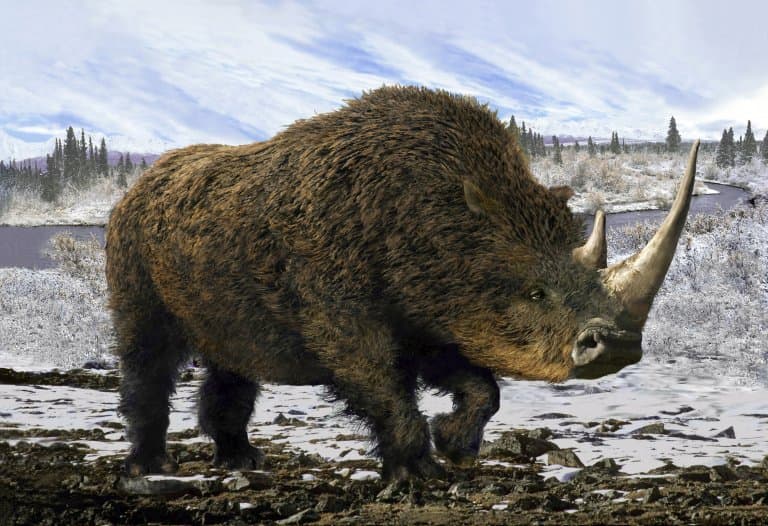
Cave paintings and mummified remains found in the permafrost in Europe and Asia have provided us with plenty of evidence for what these animals looked like: these 2-ton beasts would have had horns well over a meter long.
They had short legs, a prominent hump behind the shoulder and a thick woolly coat; all fantastic adaptations to cold weather, and all likely one of the contributors to the species extinction, as the post-ice-age climate rapidly warmed. 2
8. Irish Elk (Megaloceros giganteus) – Extinct by 4800-4900BCE
Around this time, the rapid human population growth from the Neolithic agricultural revolution has begun to stabilize and there was a healthy and sustainable global population of around 40 million people.
China began its cultivation of rice, Egypt developed its 365-day calendar, and Europe saw the end of an iconic species of deer, and one of the largest to have ever lived.
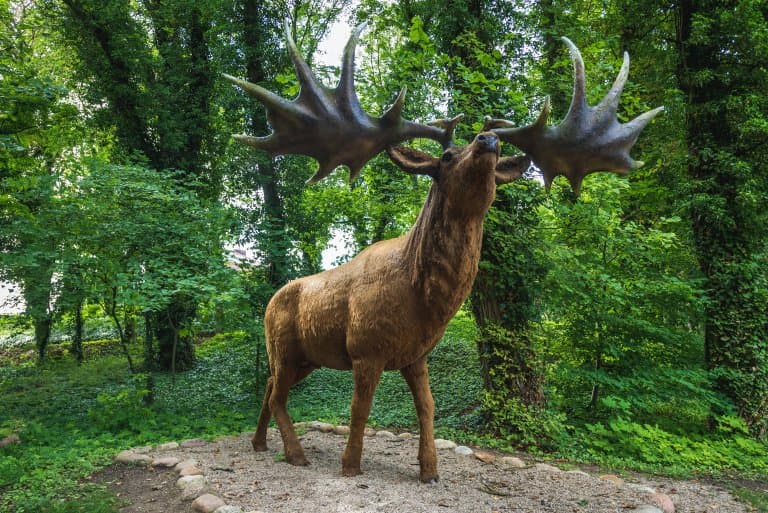
The Irish elk stood 2m tall at the shoulder and carried 40kg antlers, 4.4 meters across.
These antlers are thought to have contributed to the animal’s extinction, along with habitat loss and pressure from human hunting. 3
7. Ground Sloths (Order, Pilosa) – Extinct by 2200BCE
Around this time, the Great Pyramid of Giza had been standing for 400 years and the Old Kingdom of Ancient Egypt Had ended. Maize had begun to be cultivated in Central America, and the comet Hale-Bopp passed by humanity for its most recent visit before 1997.
Around this time, the last of the giant ground sloths shuffled their way to extinction.

These incredible beasts, close relatives of the modern-day sloths and anteaters, occupied 19 genera across the Americas.
The most outstanding of all was Megatherium, a giant at over six meters long and as heavy as an elephant.
But these were long gone, leaving behind smaller relatives like Neocnus, who remained in Central America and The Caribbean for thousands of years longer, until they were hunted to extinction by humans. 4
6. Wooly Mammoth (Mammuthus primigenius) – Extinct by 1670BCE
Egypt was on its 15th dynasty by this time, and China had entered the bronze age. Leavened bread had been discovered, and the last known population of woolly mammoths succumbed to disease.
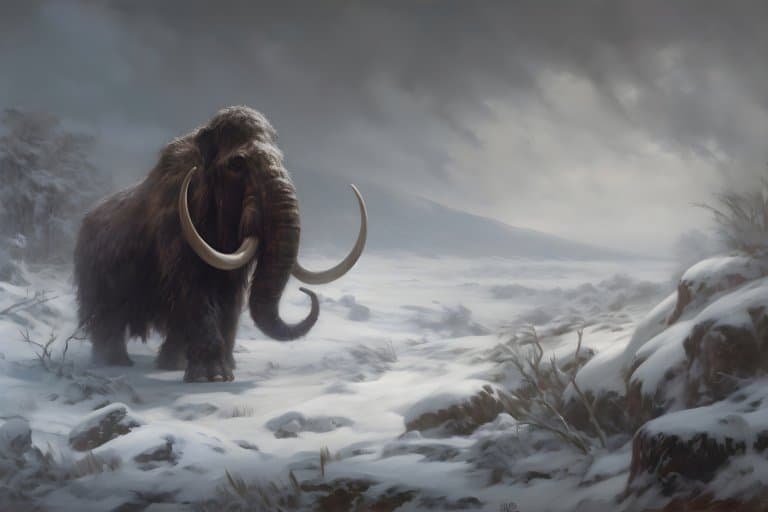
Most people will tell you that woolly mammoths died out 10,000 years ago. And this is partially true. Most did, but at least one small population held out for a lot longer on a Siberian island, where they became trapped by rising sea levels.
Unfortunately, it’s thought that there wasn’t enough genetic diversity to keep them healthy, and over time, low sperm count and illnesses like diabetes were too much to handle.
In their heyday, this species would have been as big as African elephants with colossal tusks and thick, woolly coats. The vast majority were hunted to extinction or dwindled as the climate warmed, and the remaining stragglers grew small and weak, and by the time the lineage was snuffed out, they were significantly smaller and more sickly. 5
5. Moa (Order, Dinornithiformes) – Extinct by 1440
People were already shooting each other with guns by the time this animal went extinct. The hundred years’ War came to an end, and Aztecs and Incas were in full swing. Humans had only recently discovered New Zealand, at had just finished wiping out the moa.

This flightless bird was almost 4 meters tall, and weighed up to 230 kg.
Being from an island with only one predator, it was not prepared for a group of dudes with spears, and quickly diminished, along with numerous other species, within 100 years of human arrival.
A lot of moa remains exist, with good quality DNA still inside them. Because of this, it’s one of the top candidates for a revival by cloning. 6
4. Aurochs (Bos primigenius) – Extinct by 1600s
This huge cow was one of the largest herbivores in Europe during the Holocene, at almost 2 meters tall at the shoulder and up to 700kg.
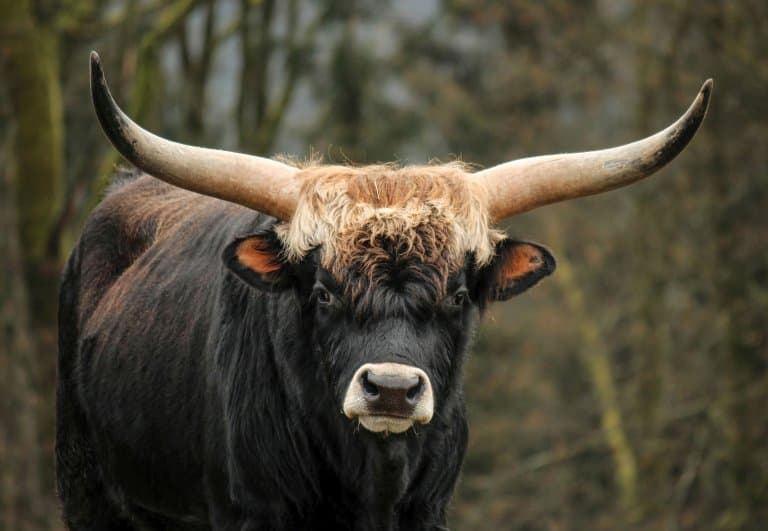
They occupied a range that spanned all of North Africa, Mesopotamia and Europe, and may have lived long enough to witness Galileo discovering the heliocentric solar system.
As the maiden voyage of the ridiculous warship, Vasa saw it sink just a few meters out of the gate, the Aurochs lineage came to an end. As their numbers dwindled in Eastern Europe, hunting them became a privilege of the royal families.
By 1601, only 4 remained in Poland, and by 1627, the last one was dead. 7
3. Dodo (Raphus cucullatus) – Extinct by 1680
Perhaps the most infamous extinction occurred during Charles II’s reign over England; Edward Teach, better known as the pirate Blackbeard, was born; and the first permanent settlers had landed on Mauritius. You can see where this is going…
The Dodo was a large, pigeon-like flightless bird on this island, and having grown up with no threats whatsoever, hadn’t learned to run away from big men with clubs.

This bird was a meter tall, with large, meaty drumsticks and sailors and settlers made short work of them by simply walking over to the animal and hitting it on the head.
Having become extinct so recently, there’s plenty of DNA available, and the Dodo is one of the top priorities of the ambitious Colossal company, that wishes to bring them back. They plant to edit the genes of a Nicobar pigeon – the Dodo’s closest living relative – and incubate the eggs themselves. 8
2. Thylacine (Thylacinus cynocephalus) – Extinct by 1936
Just three years before the second world war, the year that Stalin began his purge, and the world saw its first live televised sporting event, On September 7th, the last Tasmanian Tiger perished in Hobart Zoo, in Tasmania.
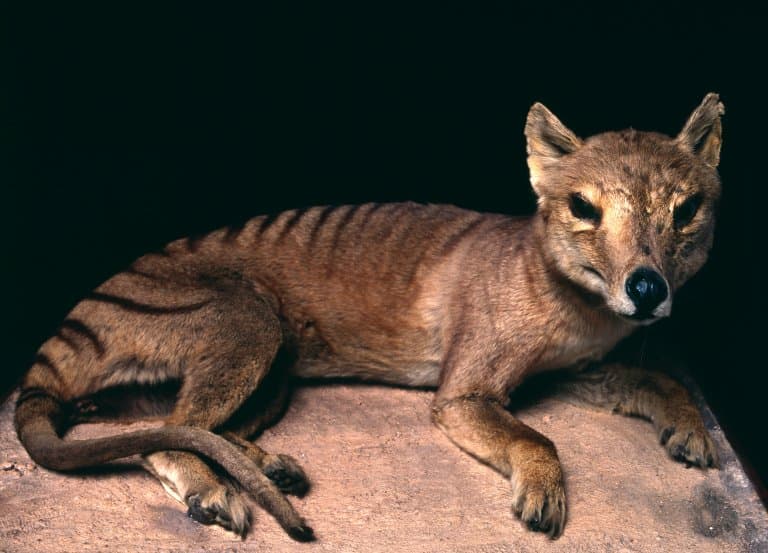
These large, dog-like carnivorous marsupials were the last of their kind and had long since been wiped out from mainland Australia by the time the Tasmanian populations were on the way out.
They were irrationally persecuted as competition for livestock owned by colonial sheep farming and hunted in droves until there were none left. The last wild Thylacine was shot by a smiling Wilf Batty in 1930. 9
1. Yangtze River Dolphin (Lipotes vexillifer) – Extinct by 2006
This species saw NASA send a probe to Pluto, Iran produce low-grade uranium, and Tony Blair announce his resignation. But it might have been the release of “You’re Beautiful” by James Blunt that sent this poor dolphin over the edge in 2006.

The Yangtze River dolphin, or baiji, had been left with no place to go. Its habitat was polluted, noisy, and infested with ship traffic, and the rapid industrialisation of China had reduced it from 6000 individuals in 1950 to zero by 2006.
Local fisheries were primarily responsible, for wiping the area clean of anything they could catch in their nets, including this small cetacean. The end of the baiji represents the end of the entire family of Lipotidae; a 20 million-year branch of evolution from its most recent ancestors, gone forever. 10
Extinction Is Occuring Now
Extinction is a part of evolution. There will always be a background rate of extinction of species as the environment changes naturally and different mutations prove to be deleterious.
However, as should be obvious from this list, many species are going extinct due to the direct impacts of human behaviour. And it’s not just hunting; it’s overfishing, deforestation, habitat loss and fragmentation, toxic runoff polluting waterways and emissions toxifying the air. 11
And on top of all of this, we’re rapidly increasing the temperature of our planet with our over-reliance on fossil fuels leading to dangerous greenhouse gases. This rate of change is faster than evolution can keep up with, and accelerating the rate of extinctions well above the natural baseline.
30% to 50% of all species could be extinct by 2050, and organisations like Extinction Rebellion are striving to bring our attention to this. But there are many others.
It doesn’t have to take a lot of time or effort to get involved in conservation, and the first step is to become informed and spread the word.
Fact Sources & References
- “Varanus priscus“, Queensland Museum.
- Alex Fox (2020), “Climate Change, Not Hunting, May Have Doomed the Woolly Rhinoceros“, Smithsonian.
- Beth Askham and Lisa Hendry (2019), “The Irish elk: when and why did this giant deer go extinct and what did it look like?“, NHM.
- Riley Black (2015), “You Just Missed the Last Ground Sloths“, National Geographic.
- Laura Geggel (2020), “The last woolly mammoths on Earth had disastrous DNA“, Live Science.
- Sharon Begley (2018), “With DNA from a museum specimen, scientists reconstruct the genome of a bird extinct for 700 years“, Stat News.
- Diana Hubbell (2022), “The Once-Extinct Aurochs May Soon Roam Europe Again“, Atlas Obscura.
- Matt Reynolds (2023), “Why Bother Bringing Back the Dodo?“, Wired.
- “Extinction of thylacine“, National Museum Australia.
- Alison Wood (2012), “The baiji – the first dolphin to be declared extinct in modern times“, WDC.
- Laura Ferguson (2019), “The Extinction Crisis“, TuftsNow.
